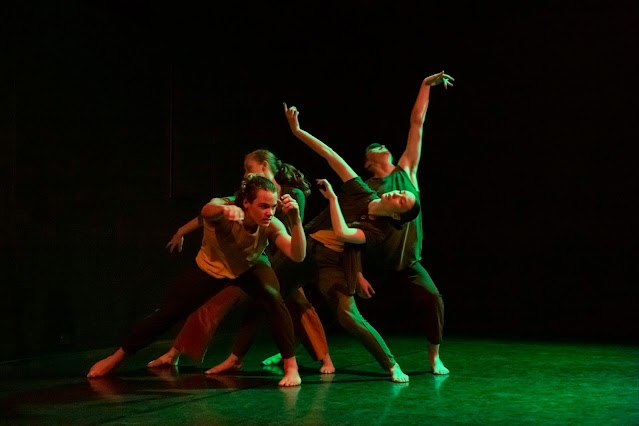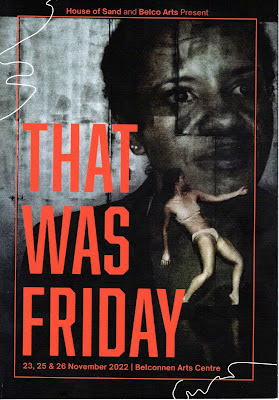Directed by
Liesel Badorrek – Conducted by Tahu Matheson
Set and
Costume Design by Mark Thompson – Lighting Design by John Rayment
Sound design
by Tony David Cray – Choreographed by Shannon Burns
Presented by
Opera Australia- Cockatoo Island – November 25th to December 18th,
2022.
Reviewed by
Bill Stephens.
The weather
could not have been more perfect as excited first-nighters, outlandishly
dressed influencers, and the just plain curious, poured off the ferries, all
eager to experience the brand new Sydney event that is “Carmen on Cockatoo
Island”.
Those
arriving early enough to savour the full experience were greeted with the sight
of hundreds of wooden benches laid out in rows providing an exceptional, and
for many an unfamiliar, view of Sydney Harbour to enjoy with their champagne
and paellas.
Director
Liesel Badorrek was charged by Opera Australia to conceive and direct a new
open-air production of the Bizet’s “Carmen” to launch this event. So taking
advantage of the industrial aesthetic of the island, she decided to strip the
opera of its Spanish setting and reset the events in a dystopian, rock ‘n roll
world.
.jpg) |
| Mark Thompson's setting for "Carmen on Cockatoo Island" |
To this end
her designer, Mark Thompson, designed a towering neon-lit industrial setting utilising
scaffolding, shipping containers, graphitised oil drums, plastic milk crates
and a pile of car wrecks, all occupying a huge stage which greeted the audience
as they found their way to their seats.
The roar of
a motor bike engine signalled the start of the overture, and as the ensemble,
costumed in defiant, anti-establishment rag-tag costumes, flooded on to the
stage, some engaged in aggressive argy-bargy while motor bikes roared up and
down the aisles creating a mood of danger and rebellion.
This mood
was echoed in the idiosyncratic choreography of Shannon Burns which included a
mimed sequence depicting the events of the opera ending with the heroine being
stabbed to death. Another version of this sequence was repeated later. .
For those
who know the opera this interpolation was something of a spoiler as it negated
the need to watch the rest of the opera. However when the real climax does
come, this spoiler is contradicted, because in this version, when Carmen
finally does meet her death, it is not by stabbing, as had been forewarned
twice, but by being strangled by Don Jose with the red silk scarf she had been
conspicuously waving through several scenes.
Apart from destroying Bizet’s original powerful finale, it also felt remarkably inappropriate to introduce a political message at the end of the opera by projecting a huge sign warning the audience it was witnessing an act of violence, at the moment Carmen is murdered, then have the ensemble immediately flood the stage performing a sort of happy mega-mix as an introduction to the messily staged bows.

Roberto Aronica (Don Jose) - Carmen Topicu (Carmen) (costume different on opening night).
With her
dark chocolatey contralto, Carmen Topicu was perfect for the role of Carmen. She
sang magnificently offering a vocally fabulous “Habanera”, and gamely executed
the direction, which often had her remaining on stage watching the events, when
she really shouldn’t have been present. Her costumes did her no favours in that
they gave her nothing to work with, and curiously, were different from the ones
she is photographed wearing in the souvenir program photos.
To add to Topicu’s
discomfort, the direction required her to portray a seductress who showed
little real interest in her Don Jose, with no compunction about forcing him to desert
his career to prove his love for her, and finally goading him into killing her
to make good the death prediction she believed was foretold in the cards with
which her friends were playing.
Roberto
Aronica as Don Jose fared rather better, offering a vocal highlight with his
flower song and providing a convincing depiction of Don Jose’s slide into
uncontrollable obsession. Despite being hampered by a curious costume which
seemed at odds with the rest of the production, Danita Weatherstone created an
affecting Micaela, providing another vocal and visual highlight with her
beautifully sung solo.
 |
| Alexander Hargreaves (Dancairo) -Agnes Sarkis (Mercedes) - Roberto Aronica (Don Jose) Danica Weatherstone (Micaela) |
Showing
every sign of having the best time letting his hair down, as well as providing
the high point of the production, internationally acclaimed baritone Daniel Sumegi revelled in the
rock-god staging of his Toreador’s Song, complete with excited dancers throwing
undergarments and screaming so enthusiastically that they threatened to drown
out the final chorus, which ended with the fireworks that now appear to have become
essential elements for staging outdoor opera.
By now, with the removal of any signposts as to time or place, the storyline had become irrelevant; even so it did seem a bit odd that this rock-god was singing about his prowess in the bullring.
At this
point the uneasy thought occurred that actually “Carmen” is not a rock opera,
nor did it require any re-invention to make it fit that mould in the pursuit of
novelty. With her magnificent outdoor production of this same work for Handa
Opera on Sydney Harbour, Gale Edwards proved that it was definitely possible to
create a successful outdoor operatic production with plenty of spectacle without
sacrificing artistic integrity.
Badorrek’s
production is certainly spectacular. It is performed by an outstanding cast of
singers and dancers whose work is enhanced by the excellent 40 piece orchestra
under the direction of Tahu Matheson who is conducting his first out-door
opera.
While
Cockatoo Island might not be opera’s happy place, Badorrek’s production sits
among its surroundings very comfortably. As a unique event it will provide a memorable
experience for the thousands attracted to the world heritage site for the first
time, who might otherwise never attend an opera, and who are unlikely to carp
about such details.
Hero image by Hamilton Lund - other images by Prudence Upton.
This review also published in AUSTRALIAN ARTS REVIEW. www.artsreview.com.au
.jpg)



.jpg)
.jpg)
.jpg)
















